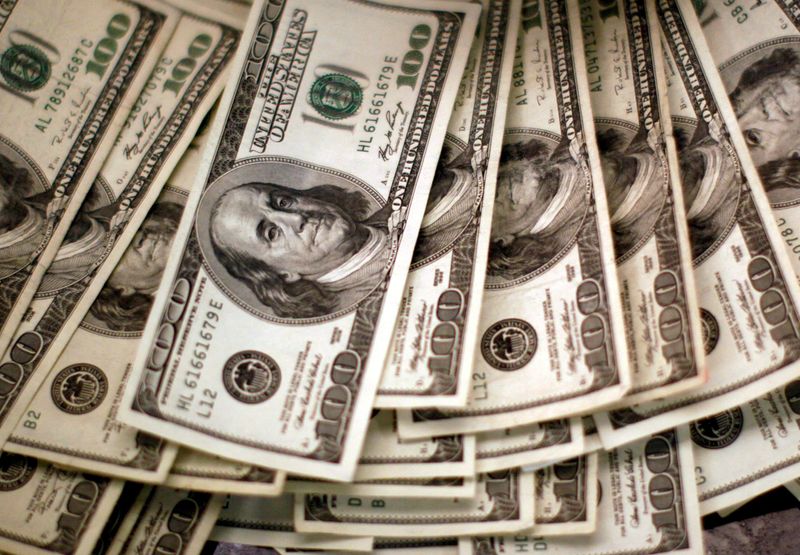 © Reuters. FILE PHOTO: Four thousand U.S. dollars are counted out by a banker counting currency at a bank in Westminster, Colorado November 3, 2009. REUTERS/Rick Wilking/File Photo
© Reuters. FILE PHOTO: Four thousand U.S. dollars are counted out by a banker counting currency at a bank in Westminster, Colorado November 3, 2009. REUTERS/Rick Wilking/File Photo
By Herbert Lash and Iain Withers
NEW YORK/LONDON (Reuters) -The dollar was steady on Wednesday after a core reading of U.S. producer prices showed underlying inflation moderated further in September, leading the market to reason the Federal Reserve is done hiking interest rates.
The market later barely reacted to minutes of the Fed's policy meeting last month that showed uncertainty around the path of the U.S. economy pushed Fed officials into a cautious stance as they debated whether more rate hikes were needed.
Rising Treasury yields in recent months may be doing some of the U.S. central bank's work for it, Dallas Fed President Lorie Logan and Fed Governor Christopher Waller have argued, preventing any urgent need for another rate hike.
"The doves have broken out of their cages, but aren't yet in full flight," said Karl Schamotta, chief market strategist at Corpay in Toronto.
"On balance, the minutes show officials turning far more concerned about downside risks to the U.S. economy - but also expressing humility in the face of deeply confusing and often contradictory signals in the data," he said.
The dollar index, which tracks the U.S. currency against six others, traded little changed after touching a two-week low of 105.550, while the euro rose to its highest since Sept. 25 at $1.0634.
After stripping out food, energy and trade services, the producer price index (PPI) gained 0.2% last month, the same margin as in August. In the 12 months through September, core PPI increased 2.8%, or less than a 2.9% advance in August.
"There's optimism that the disinflation process is still intact despite some of the hot numbers that we got today," said Edward Moya, senior market analyst at OANDA in New York, adding that building material margins had impacted the data.
"The market has really become confident that the Fed could be done raising rates" after a "steady dose of dovish Fed speak" this week, Moya said.
Waller on Wednesday said higher market rates may help the Fed slow inflation and let policymakers "watch and see" if the Fed's policy rate needs to rise again or not as price data seemed to be moving towards its 2% target.
The dollar's recent weakness has been driven by declining Treasury yields as bond prices rallied on the Fed's softer stance on future rate hikes. Bond yields move opposite to their price.
The yield on 10-year Treasuries was last down 7.6 basis points at 4.579%, a roughly 30 basis point drop from a 16-year high of 4.887% last Friday after a strong jobs report.
Investors await the release a key inflation print on Thursday for further direction on the path ahead for rates.
Investors also are keeping a close eye on the conflict between Israel and Palestinian Islamist group Hamas, which drove safe-haven market moves earlier in the week.
On Tuesday, Atlanta Fed Bank President Raphael Bostic said the central bank did not need to raise borrowing costs any further, while Minneapolis Fed President Neel Kashkari said it was "possible" that further hikes might not be needed.
Sterling rose to a three-week high of $1.2337 and was last up 0.2% at $1.23105. The euro was up 0.08% at $1.0614.
Euro zone households see inflation staying slightly above the European Central Bank's (ECB) 2% target for another three years, an ECB survey on Wednesday showed, as rate-setters struggle to convince the public their plans to tame prices are on track.
The ECB has made "important progress" in getting inflation back down to target but there is still a long road ahead and a further rate hike cannot be ruled out, Dutch central bank chief Klaas Knot said on Wednesday.

